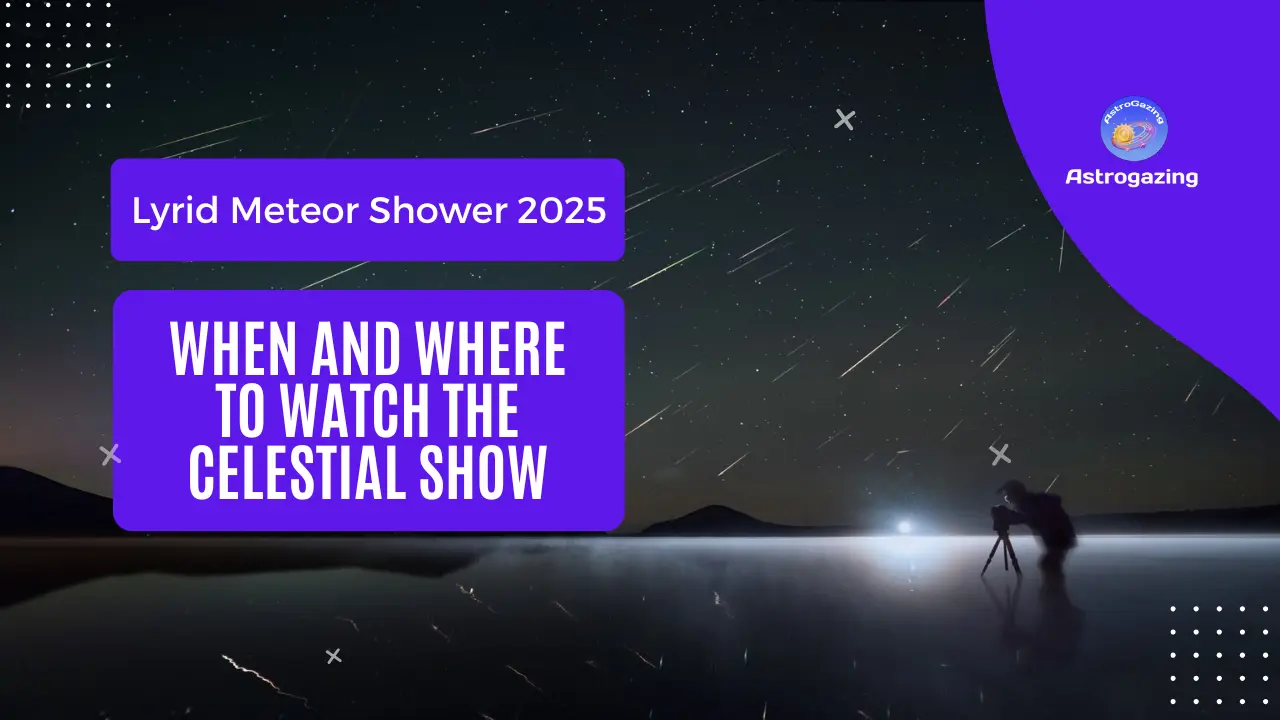Lyrid Meteor Shower 2025, When and Where to Watch the Celestial Show

Lyrid Meteor Shower April 21-22
The Lyrid meteor shower, one of the oldest known meteor showers, is set to dazzle the night sky this April. Originating from debris left by Comet Thatcher, the Lyrids have been observed for over 2,700 years. In 2025, skywatchers can expect a modest display, with the peak occurring on the night of April 21 into the early hours of April 22
When to Watch
Peak Activity: The Lyrids will reach their peak on the night of April 21–22, 2025, with the best viewing times between midnight and dawn.
Meteor Rate: Observers can expect to see up to 18 meteors per hour under ideal conditions.
Moon Conditions: A waning crescent moon will rise after midnight, providing relatively dark skies for optimal viewing.
Where to Watch in India
For observers in India, including Pune, the Lyrid meteor shower will be visible in the northeastern sky. To maximize your viewing experience:
- Find a Dark Spot: Choose a location away from city lights to reduce light pollution.
- Look Northeast: The meteors will appear to radiate from the constellation Lyra, which rises in the northeastern sky.
- Best Viewing Time: Between 2:00 AM and 5:00 AM local time, when the radiant point is highest in the sky.
- Weather Conditions: Check local weather forecasts to ensure clear skies during the viewing window.
Viewing Tips
- Allow Your Eyes to Adjust: Spend at least 20 minutes in the dark to let your eyes adapt.
- Use a Reclining Chair or Blanket: Lie back and look up to take in as much of the sky as possible.
- Avoid Screens: Minimize the use of phones or other devices to maintain night vision.
- Be Patient: Meteors can appear sporadically; give yourself at least an hour for viewing.
Capturing the Moment
PDS 70 offers more than a peek into planetary formation; it’s a living laboratory for studying the birth and evolution of celestial bodies. By observing it, scientists test theories about how planets and moons emerge, migrate, and develop. This system also provides a glimpse into how our own Solar System might have looked billions of years ago—a messy, chaotic glitter explosion on a galactic scale.
- Use a Tripod: Stabilize your camera to avoid blurry images.
- Long Exposure: Set your camera to a long exposure time (15–30 seconds) to capture meteor trails.
- High ISO Settings: Use higher ISO settings (800–1600) to capture more light.
- Wide-Angle Lens: A lens with a wide field of view will capture more of the sky.
The Lyrid meteor shower is one of the oldest recorded meteor showers, with observations dating back to 687 BC in China.
Looking Ahead
The Lyrid Meteor Shower 2025 is not just a stargazing event—it’s a chance to reconnect with the universe, reflect under the stars, and witness a natural light show that has graced our skies for over 2,700 years. Whether you’re an astronomy enthusiast, a casual observer, or someone simply looking for a moment of peace and wonder, the Lyrids offer something magical.
Set your alarm, find a quiet dark sky location, and let the night sky remind you of the beauty and vastness of the cosmos. Don’t forget your warm clothes, a comfy chair, and maybe a thermos of coffee or cocoa. Happy watching!
